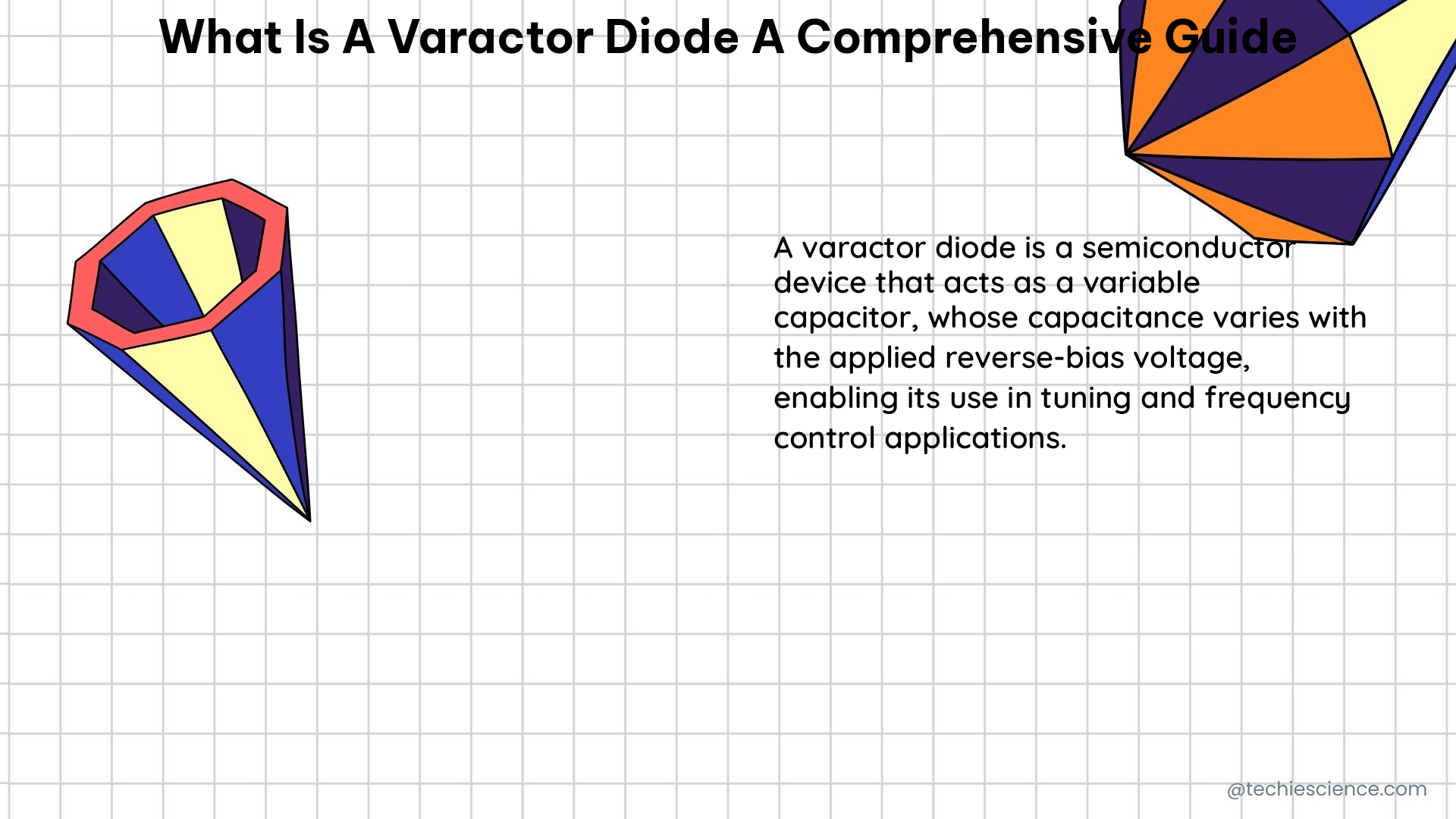A varactor diode, also known as a varicap or voltage-variable capacitor, is a specialized type of PN junction diode primarily used in the reverse-biased mode. Its unique ability to vary its capacitance with the applied reverse bias potential makes it invaluable in oscillator circuits, tuning applications, and various RF design scenarios.
Understanding the Varactor Diode
Transition Capacitance (CT)
The transition capacitance (CT) of a varactor diode is governed by the formula:
CT = ɛA/W
Where:
– ɛ is the dielectric constant of the semiconductor material
– A is the effective area of the capacitor plates
– W is the width of the depletion layer
This relationship reveals that the transition capacitance is inversely proportional to the depletion layer width. As the reverse bias voltage increases, the depletion layer width expands, leading to a decrease in the transition capacitance.
Quality Factor (Q)
The quality factor (Q) of a varactor diode is defined as:
Q = F/f
Where:
– F is the maximum operating frequency
– f is the actual operating frequency
The quality factor is a measure of the diode’s efficiency and indicates how well it can maintain its capacitance at higher frequencies. A higher Q value is desirable for better performance in RF and microwave applications.
Construction and Materials
The construction of a varactor diode is similar to a standard PN junction diode, with some additional features to enable the variable capacitance behavior. The integral part of varactor diodes is typically made from semiconductor materials like silicon (Si) or gallium arsenide (GaAs).
Silicon varactors are commonly used due to their lower capacitance range, which is better suited for many applications. The capacitance change characteristic of a varactor diode is directly influenced by the doping structure within the diode. For example, the difference in doping profiles between an abrupt and a hyperabrupt diode affects the capacitance change.
Temperature Dependence
In a well-designed varactor diode, the capacitance changes with temperature according to the equation:
Q = –32fma xlimi t= Qref fref 100 fma xlimi t= Qref fref 10
Where T is the absolute temperature in degrees Kelvin.
This temperature dependence is an important consideration in the design and application of varactor diodes, as it can impact the overall circuit performance.
Applications of Varactor Diodes

Varactor diodes find widespread use in the electronics industry and the RF design arena due to their unique ability to vary capacitance with applied voltage. Some of the key applications include:
-
Tuning Filters: Varactor diodes are used in tuning filters, where their voltage-controlled capacitance allows for precise frequency adjustments.
-
Tracking Filters: Varactor diodes are employed in tracking filters, which are used to maintain a constant bandwidth as the center frequency is varied.
-
Voltage-Controlled Oscillators (VCOs): Varactor diodes are an integral component in VCOs, where their voltage-dependent capacitance is used to control the oscillation frequency.
-
Frequency Modulation (FM) Tuners: Varactor diodes are used in FM tuners to provide the voltage-controlled capacitance needed for frequency tuning.
-
Phase-Locked Loops (PLLs): Varactor diodes are utilized in the voltage-controlled oscillator (VCO) section of PLLs, enabling precise frequency control and synchronization.
-
Radar Systems: Varactor diodes find applications in radar systems, where their voltage-controlled capacitance is used for frequency tuning and modulation.
-
Microwave Circuits: Varactor diodes are employed in various microwave circuits, such as mixers, multipliers, and attenuators, where their variable capacitance characteristics are leveraged.
-
Automatic Frequency Control (AFC) Circuits: Varactor diodes are used in AFC circuits to maintain a constant frequency by adjusting the capacitance in response to frequency variations.
The versatility and performance of varactor diodes make them an indispensable component in a wide range of electronic and RF applications, from consumer electronics to advanced communication systems.
Reference:
- Learning material for understanding how a varactor diode works
- Varactor Diode – Definition, Characteristics, Working and Construction
- The engineer’s guide to varactor diodes (voltage variable capacitors)

The lambdageeks.com Core SME Team is a group of experienced subject matter experts from diverse scientific and technical fields including Physics, Chemistry, Technology,Electronics & Electrical Engineering, Automotive, Mechanical Engineering. Our team collaborates to create high-quality, well-researched articles on a wide range of science and technology topics for the lambdageeks.com website.
All Our Senior SME are having more than 7 Years of experience in the respective fields . They are either Working Industry Professionals or assocaited With different Universities. Refer Our Authors Page to get to know About our Core SMEs.